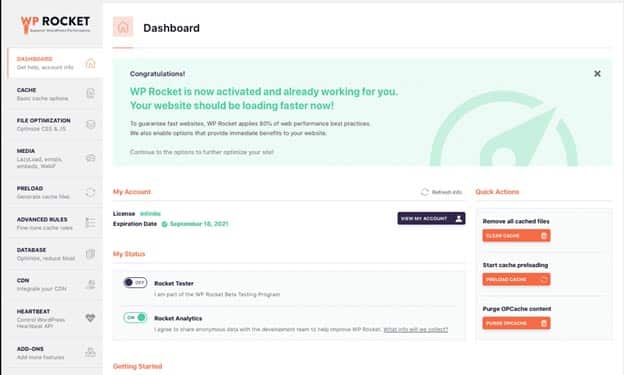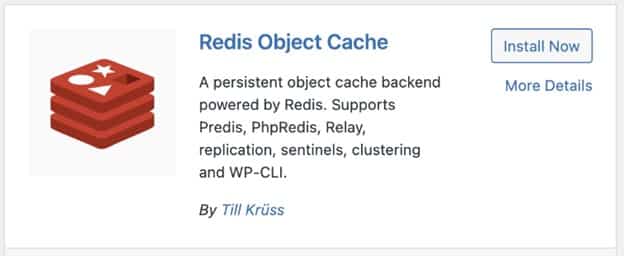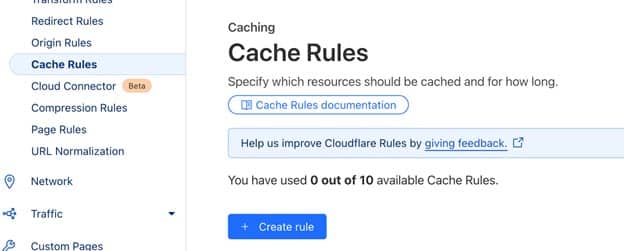Why Caching Is Critical for Website Performance
You’ve probably heard that “speed kills”—but in the world of websites, it’s the opposite. A fast website keeps visitors engaged, boosts search rankings, and increases conversions. Caching is one of the most powerful yet underrated tools for speeding up your site, especially if you’re using WordPress on a cPanel or DirectAdmin hosting plan.
Let’s explore how different types of caching work, and why your website needs them.
What Is Caching? A Simple Explanation for Beginners
Imagine someone asking you the same question over and over. Eventually, you’d write the answer down and hand it to them instead of repeating yourself, right?
That’s caching in a nutshell. Your website stores copies of frequently requested files—like pages, scripts, or images—so it doesn’t have to regenerate them every single time a visitor lands on your site. This saves time, server resources, and makes everything load faster.
Why Websites Need Caching: Speed, Load, and SEO
Every time someone visits your website, their browser makes dozens (sometimes hundreds) of requests to your server. If your server had to build each page from scratch every time, it would slow things down drastically.
Caching reduces this load, leading to:
- Faster page load times
- Lower server usage (great for shared hosting)
- Improved SEO rankings
- Higher visitor satisfaction and retention
Browser Caching: Making Repeat Visits Blazing Fast
Browser caching stores website assets—like stylesheets, images, and JavaScript—on the user’s device. When they come back, their browser already has most of what it needs, so it loads the page nearly instantly.
In your hosting dashboard (cPanel or DirectAdmin), you can set cache headers that tell the browser how long to store those files. It’s easy, effective, and reduces repeat load on your server.
Page Caching: Storing Complete Pages for Instant Loading
Page caching is like taking a screenshot of your web page and showing it to users instead of rebuilding it every time.
For WordPress sites, this is a game-changer. Plugins like WP Rocket, LiteSpeed Cache, or W3 Total Cache create and serve these static pages, drastically improving speed. This is especially helpful for high-traffic blogs, ecommerce stores, or landing pages.
Also Read: LiteSpeed Web Server + LS Cache Plugin for WordPress on VeeroTech Hosting
Object Caching: Speeding Up Database-Heavy Apps like WordPress
WordPress depends heavily on its database. Object caching saves the results of common queries (like getting your latest blog posts or product details) so the server doesn’t have to run the same database call repeatedly.
Tools like Redis or Memcached are commonly used here. They work well in VPS or dedicated hosting environments.
Also Read
How to Enable Redis Object Cache for Your Website on VeeroTech Servers
How to Configure Redis Object Cache in WordPress
Opcode Caching: Optimizing PHP Performance
PHP is the scripting language that powers WordPress. Every time a page is requested, the PHP code is compiled into executable code.
Opcode caching (using tools like OPcache) stores this compiled code in memory so it doesn’t have to be compiled again. That means faster PHP execution and less CPU load—especially beneficial for busy websites.
Most hosting platforms, including ours, have OPcache enabled by default on PHP servers.
CDN Caching: Global Speed via Content Delivery Networks
A Content Delivery Network (CDN) like Cloudflare stores cached versions of your site on servers around the world. So when a visitor from Europe hits your site hosted in the U.S., they get the cached content from a nearby server—speeding things up significantly.
CDN caching complements other types of caching by reducing latency and offloading bandwidth.
Database Caching: Faster Queries, Faster Websites
Database caching stores the results of specific SQL queries so they can be fetched quickly without hitting the database again.
This type is most effective for dynamic sites with frequent content changes. Many managed WordPress hosts offer this by default, or you can use plugins like Query Monitor to analyze queries, then implement optimizations via object caching tools like Redis.
| Caching Type | What It Caches | Best For | Tools/Examples |
|---|---|---|---|
| Browser | Assets (images, JS, CSS) | Repeat visitors | Cache headers in .htaccess |
| Page | Full HTML pages | Static sites/blogs | WP Rocket, LiteSpeed Cache |
| Object | Database query results | Dynamic WP sites | Redis, Memcached |
| Opcode | Compiled PHP code | PHP-heavy apps | OPcache |
| CDN | Site content globally | International traffic | Cloudflare |
| Database | SQL query results | Query-intensive sites | Integrated with object caching |
Best Caching Methods for WordPress Websites
For WordPress users, combining several caching layers is the magic formula. Here’s a good mix:
- Page caching for the front-end
- Browser caching for repeat visitors
- Opcode caching for PHP efficiency
- Object/database caching for dynamic content
Plugins to Try: WP Rocket, W3 Total Cache, and LiteSpeed Cache
- WP Rocket: Premium, super user-friendly, and all-in-one.
- LiteSpeed Cache: Best if your hosting uses LiteSpeed servers.
- W3 Total Cache: Advanced control for developers.
Each of these offers multiple layers of caching, and they’re compatible with both cPanel and DirectAdmin setups.
How Server-Level Caching Works on cPanel and DirectAdmin
Our hosting plans come pre-optimized with server-side caching options that enhance performance:
- cPanel: Supports OPcache, LiteSpeed Cache (if the server supports), and EasyApache modules for performance tuning.
- DirectAdmin: Easily integrates with NGINX caching, Redis, and FastCGI for PHP caching.
These options provide caching from the ground up—without relying solely on plugins.
What Our Hosting Platform Does to Optimize Caching
At VeeroTech, we implement several caching strategies right out of the box:
- Opcode caching (OPcache)
- HTTP caching via LiteSpeed
- CDN integration support
- Optimized WordPress environments
This ensures your site performs at its best—whether you’re on cPanel or DirectAdmin.
How Caching Impacts Website Speed, SEO & User Experience
A well-cached website can load in under two seconds, which is critical because:
- 40% of users abandon sites that take over 3 seconds
- Google uses site speed as a ranking factor
- Lower bounce rates = better engagement
Caching improves Time to First Byte (TTFB), reduces load times, and creates a smoother experience for your users.
Common Caching Issues and How to Avoid Them
- Outdated content: Cache may not update instantly when content changes.
- Login issues: Page caching might show cached pages to logged-in users.
- Plugin conflicts: Some WordPress plugins don’t play well with aggressive caching.
To avoid problems, test your site regularly and clear the cache when updating content or themes.
When to Clear Cache and Why It Matters
You should clear your cache when:
- Making design or content changes
- Updating plugins or themes
- Experiencing display issues
Most caching tools offer a one-click “Clear Cache” button. Use it—it’s your friend!
Tools to Test Cache Performance (GTmetrix, Pingdom, etc.)
Want to see how caching improves your site?
- GTmetrix: Great for measuring load times and waterfall breakdowns
- Pingdom Tools: Easy to use with geographic test locations
- Google PageSpeed Insights: Gives you insights into caching opportunities
These tools show you real data to validate your efforts.
Smart Caching = Faster Websites and Happier Visitors
Caching isn’t just a “nice-to-have”—it’s a must-have. Whether you’re running a personal blog or a busy ecommerce site, the right caching strategy can improve performance, save resources, and boost your bottom line.
And with our hosting plans supporting both cPanel and DirectAdmin, you’re in full control of how caching works for your website.
FAQs About Website Caching
Caching improves load time. Faster load times improve user experience, SEO, and server performance.
Yes. WordPress is dynamic, so caching makes it significantly faster and more efficient.
Only when making changes to content, themes, or settings that affect your site’s display.
Both. Plugins handle front-end caching, while server-side caching boosts performance deeper down.
Yes, especially with cart pages or checkout. You’ll need to exclude dynamic pages from cache.
Try clearing your browser and site cache—it’s often just an outdated version being shown.
If you have any web hosting questions please feel free to reach out to us. We're happy to help.




